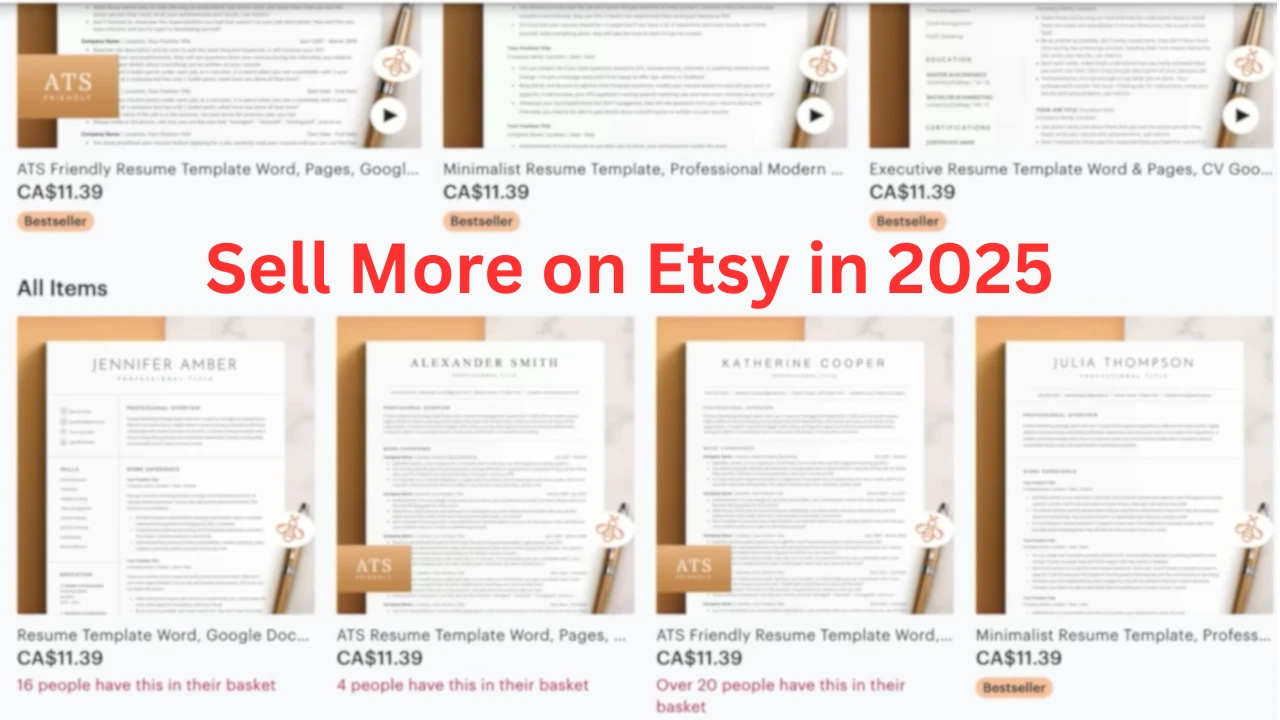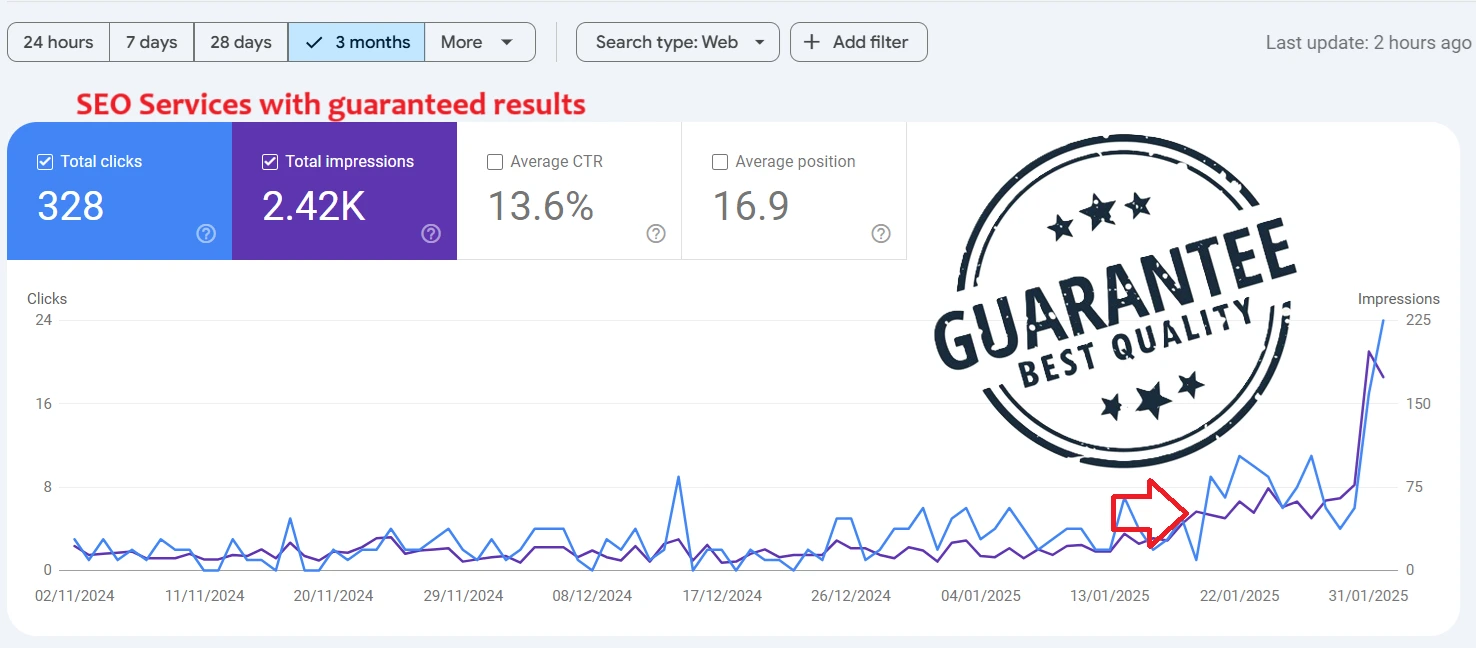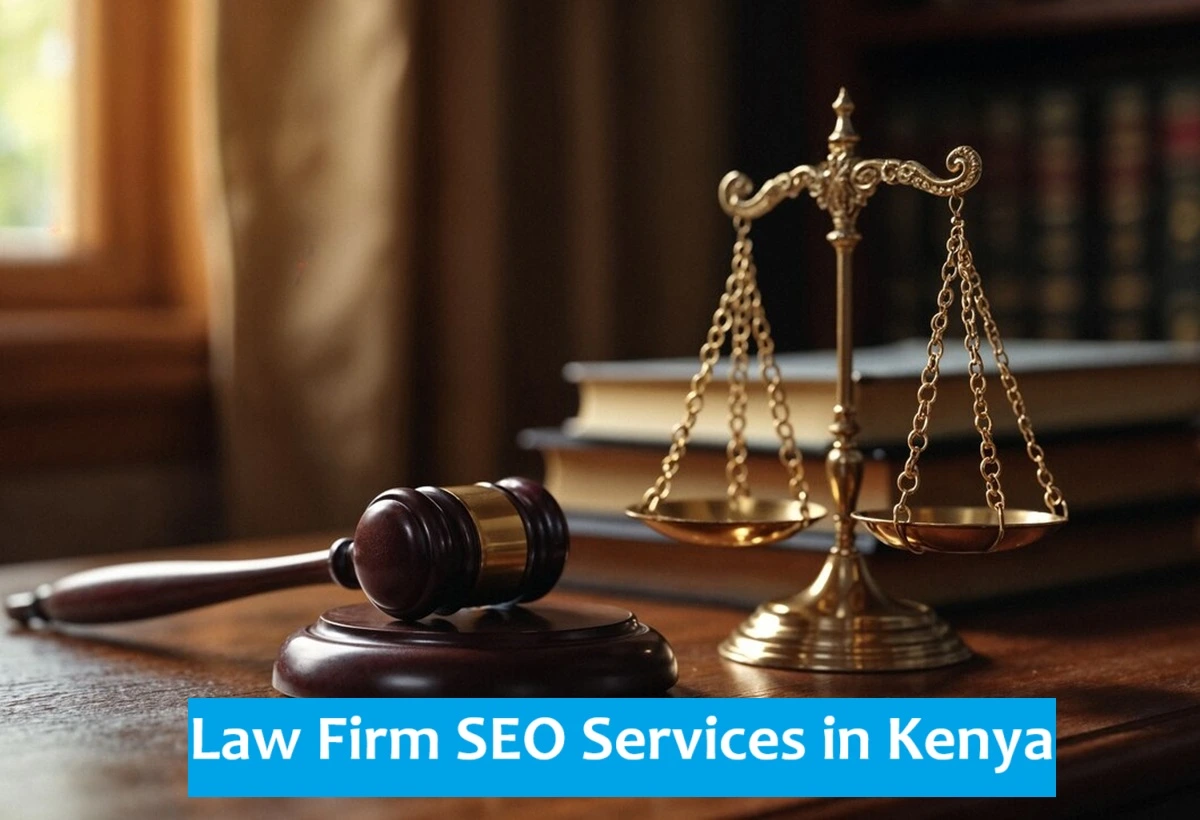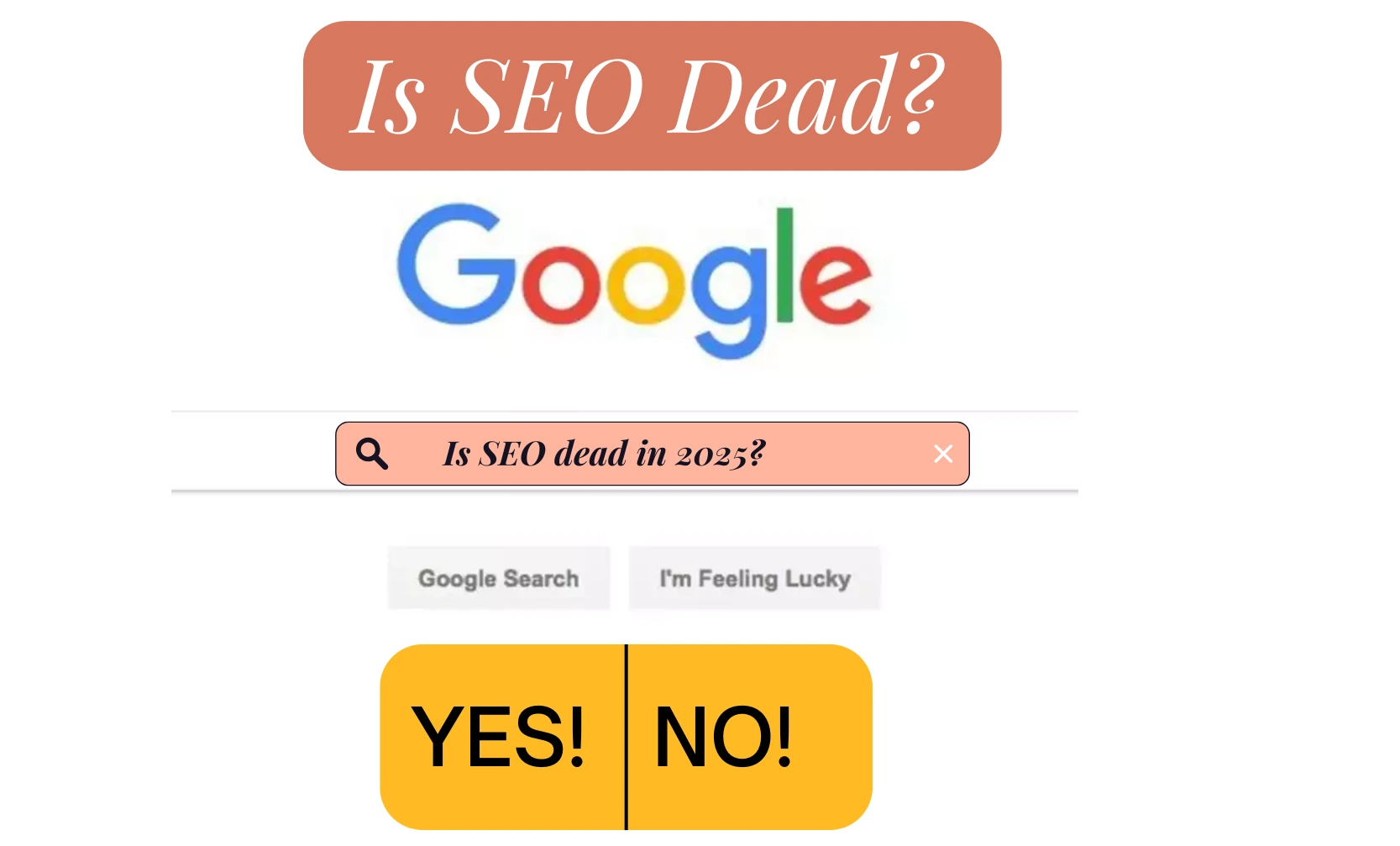
Etsy has grown into a competitive marketplace, and standing out requires more than just listing great products. To sell more on Etsy, you need a blend of effective strategies, attention to detail, and a buyer-focused approach.
We did research and collected insights from 100+ successful Etsy shops. I break down the findings into actionable steps to help you boost traffic and conversions.
Optimizing Your Listings for Maximum Reach
Your Etsy listing is the gateway to attracting buyers. To maximize visibility and sales, you must optimize every element of your listing. Here’s how to get it right:
1. Use All 13 Tags Effectively
Tags are a critical tool to expand your listing’s reach in Etsy search results. Each listing allows up to 13 tags, and you should use every one of them. Here’s how to make the most of them:
- Choose High-Impact Keywords: Focus on high-search-volume keywords with low competition. Tools like keyword research extensions or analyzing competitors’ tags can help identify these opportunities.
- Include Variations: Use synonyms, alternative phrases, and regional spellings. For example, if you sell tote bags, you can use terms like “canvas bag,” “shopping bag,” or “eco tote.”
- Be Specific: Add details such as the intended use, material, or style. For example, “vegan leather tote for office.”
By filling all your tag slots with strategic keywords, you increase your product’s chances of appearing in various search queries.
2. Write Keyword-Rich Titles
Etsy SEO heavily relies on titles, so crafting them correctly is very essential. A well-optimized title does two things: helps your product rank and makes it appealing to buyers.
Here’s how to structure your titles:
- Start with Primary Keywords: Place the most relevant and high-impact keyword at the beginning. For example, “Personalized Photo Frame for Couples.”
- Include Secondary Keywords: Add descriptors that enhance specificity, like “handmade,” “rustic,” or “modern.”
- Stay Natural: Avoid keyword stuffing. Instead of “photo frame gift, wooden frame, rustic frame,” write “Rustic Wooden Photo Frame – Perfect Gift for Weddings.”
A clear and concise title makes your listing SEO-friendly and buyer-friendly.
3. Create Compelling Descriptions
While Etsy doesn’t prioritize descriptions for SEO, they play a vital role in converting browsers into buyers. Use this space to:
- Highlight Features and Benefits: Describe the unique qualities of your product and how it solves the buyer’s problem. For example, “Made from durable vegan leather, this tote bag is perfect for daily errands or weekend getaways.”
- Answer Common Questions: Address concerns like dimensions, materials, and usage.
- Include Call to Actions (CTAs): Encourage buyers with phrases like “Order now to receive it by Christmas!” or “Perfect for gifting.”
4. Add Listing Videos
Videos can dramatically increase your conversion rate by giving buyers a better sense of your product. They help build trust and answer potential questions visually.
Tips for effective listing videos:
- Demonstrate Use: Show your product in action. For instance, display a planner being flipped through or customized.
- Highlight Details: Zoom in on unique features, such as stitching, texture, or special functionalities.
- Keep It Short: Aim for 15–30 seconds to keep it engaging and informative.
5. Maximize Image Slots
Every listing allows up to 10 images, and using all of them can provide buyers with a complete understanding of your product. Here’s how to make them count:
- Lead with a Hero Image: This is the first photo shoppers see. Ensure that it is of high-quality and showcases your product clearly.
- Include Lifestyle Shots: Show the product in use or in a relatable setting.
- Use Detail Shots: Highlight unique aspects, such as craftsmanship or material quality.
- Add Informational Slides: Include text overlays with care instructions, size charts, or package contents.
Buyers often swipe through images instead of reading descriptions, so use visuals to answer questions and make your product irresistible.
Use the Power of Pricing Strategies to Boost Sales
Pricing is more than just assigning a value to your products—it’s a powerful tool that can influence buying decisions and maximize your shop’s profitability.
Successful Etsy shops often employ strategic pricing techniques to appeal to a broader audience and increase their average order value. Here’s how you can do the same:
1. Offer a Range of Price Points
Having multiple price options for your products can attract a wider audience and accommodate different buyer preferences. For instance:
- Entry-Level Options: Include budget-friendly versions of your products to capture cost-conscious buyers.
- Mid-Tier Options: These are the “sweet spot” products, offering a balance of features and affordability.
- Premium Options: Showcase high-end versions with added value or exclusive features.
This pricing structure not only appeals to different buyer segments but also leverages the concept of price anchoring.
For example, a premium product at $40 can make a mid-tier $25 item seem more reasonable and encourage buyers to choose it.
2. Use Bundling to Increase Value
Create product bundles to offer more perceived value to buyers while increasing your revenue. Bundles can include:
- Complementary Products: Pair items that are often used together, like a planner with stickers or a mug with a coaster set.
- Customizable Packages: Allow buyers to select items from a list, offering flexibility and personalization.
- Discounted Sets: Price bundles slightly lower than buying items individually to encourage bulk purchases.
Bundling also helps you stand out from competitors and gives buyers a reason to shop at your store.
3. Experiment with Free Shipping
Shipping costs can significantly impact a buyer’s decision to purchase. Offering free shipping—or free shipping over a specific amount—can reduce friction and encourage higher-order values. Consider:
- Incorporating Shipping Costs into Product Prices: This creates the appearance of free shipping while maintaining your margins.
- Setting a Minimum for Free Shipping: For instance, “Free shipping on orders over $35” encourages buyers to add more items to their cart.
4. Run Seasonal Promotions
Sales and discounts during key shopping periods can drive significant traffic and boost sales. Plan your promotions around:
- Holidays: Offer discounts for Valentine’s Day, Christmas, or Mother’s Day.
- Seasonal Trends: Launch sales during back-to-school, summer, or winter seasons, depending on your product category.
- Shop Milestones: Celebrate anniversaries or reaching a specific number of sales with exclusive discounts.
Highlight your promotions on your shop banner and product images to grab attention.
5. Monitor Competitor Pricing
Stay competitive by regularly analyzing how similar products are priced in your niche. While undercutting prices isn’t always the best strategy, understanding market trends helps you position your products effectively. Look for ways to:
- Add Value Instead of Lowering Prices: Offer bonuses like free digital downloads, gift wrapping, or exclusive content.
- Identify Gaps: If competitors lack mid-tier or premium options, fill that gap with your offerings.
6. Use Pricing to Tell a Story
Your pricing can communicate the quality and uniqueness of your products. If you’re selling handmade or high-end items, don’t undersell yourself.
Buyers on Etsy value craftsmanship and are often willing to pay a premium for well-made goods. Pair higher prices with:
- Detailed Descriptions: Emphasize the time, skill, and materials that go into your products.
- Premium Branding: Use elegant visuals and professional photography to justify your price point.
Creating a Shop That Stands Out
A visually appealing and well-organized shop is essential for grabbing attention and earning buyer trust.
We found that top-performing Etsy shops focus on cohesive branding, a professional layout, and enhanced functionality to create an engaging shopping experience. Here’s how you can elevate your shop:
1. Craft an Eye-Catching Banner
Your shop banner is one of the first things buyers notice. Instead of merely displaying your logo, use this space to highlight what your shop offers. Effective banners often include:
- Product Showcase: Display a grid of your bestsellers or seasonal items.
- Promotions: Highlight sales, free shipping offers, or new product launches.
- Clear Branding: Use consistent fonts, colors, and styles to reinforce your shop’s identity.
A product-focused banner makes an immediate impact and tells buyers exactly what to expect.
2. Optimize Your Shop Title
The shop title appears just below your shop name and is a prime spot to add keywords. Use this space to describe what you sell in a way that helps buyers find your shop through search. For example:
- Instead of "Handmade Creations," try "Handmade Jewelry and Wedding Accessories."
- Incorporate high-traffic keywords related to your niche to boost your shop’s discoverability.
This simple tweak can significantly improve your shop’s SEO and attract the right audience.
3. Use Sections to Organize Your Listings
Etsy allows you to group your products into sections, making it easier for buyers to browse. Sections act like mini-categories within your shop. For example:
- If you sell stationery, create sections like “Planners,” “Stickers,” and “Notebooks.”
- For home decor shops, sections could include “Wall Art,” “Throw Pillows,” and “Seasonal Decor.”
Organized sections improve the user experience and make it more likely for buyers to explore additional listings.
4. Build a Strong About Section
The About section is your chance to connect with buyers on a personal level. Use it to share your story and what makes your shop unique. Effective About sections include:
- Your Backstory: Explain how your shop began and what inspires your creations.
- Your Process: Describe how your products are made, showcasing their quality and uniqueness.
- Professional Images or Videos: Add behind-the-scenes shots of your workspace, tools, or creative process.
A compelling About section helps build trust and shows buyers the human side of your business.
5. Maintain a Cohesive Brand
Consistency is key to making your shop look professional and memorable. Develop a brand style guide that includes:
- Color Palette: Choose 3-5 complementary colors and use them consistently in your listings and visuals.
- Typography: Stick to 1-2 fonts for banners, product images, and promotional graphics.
- Photography Style: Use similar lighting, angles, and backgrounds for all product images.
A cohesive brand makes your shop look polished and builds recognition over time.
6. Add an FAQ Section
Answering common questions upfront reduces friction for buyers and can improve your conversion rate. Include:
- Product Details: Clarify dimensions, materials, or customization options.
- Shipping Information: State processing times, shipping costs, and estimated delivery windows.
- Returns and Exchanges: Outline your policies clearly.
FAQs also help optimize your shop for SEO when you include keywords that potential buyers might search for.
7. Feature High-Quality Product Photos
Your product photos are one of the most critical aspects of your shop. Follow these tips:
- Use All 10 Image Slots: Showcase lifestyle shots, close-ups, and scale comparisons.
- Include an Instructional Image: For example, show how your product can be assembled or used.
- Highlight Benefits: Create slides with text overlays to emphasize unique features or promotions.
Diversify Your Product Range
Having a well-rounded product range not only increases your shop’s appeal but also helps you attract a wider audience.
Successful Etsy sellers focus on variety and strategic pricing to cater to different customer preferences and needs.
Let’s explore how to optimize your product lineup:
1. Offer Products at Multiple Price Points
Not all buyers have the same budget. Including products at various price points ensures you can cater to a broader audience. Here’s how you can structure your pricing:
- Entry-Level Products: Offer budget-friendly options that introduce buyers to your shop, such as small items or digital downloads.
- Mid-Range Products: These are your primary offerings and likely your bestsellers.
- Premium Products: Include high-value items with more features or customization options.
This pricing strategy, often referred to as price anchoring, makes your mid-range products more appealing when compared to premium ones.
2. Expand Your Listings with Variations
By creating multiple listings that target different customer needs, you can improve your shop’s reach. Each listing allows you to use unique keywords, broadening your shop’s visibility. For example:
- If you sell home decor, list items in different styles, colors, or sizes.
- If you sell jewelry, create separate listings for gold, silver, or rose gold options.
Every additional listing acts as a new opportunity for customers to find your shop.
3. Cater to Seasonal Trends
Adding seasonal products or designs to your shop is a great way to tap into timely trends and boost sales. For instance:
- Offer holiday-themed items such as Valentine’s Day cards, Christmas ornaments, or summer-themed decor.
- Use keywords in your titles and tags that align with the season, like "Spring Decor" or "Back-to-School Supplies."
Seasonal offerings create a sense of urgency and can drive more sales during peak shopping periods.
4. Leverage Customization and Personalization
Buyers love unique items, and offering customizable products can set your shop apart. Some ideas include:
- Monogrammed or engraved items: Ideal for gifts and special occasions.
- Custom colors or designs: Let customers choose their preferences.
- Personalized messages or packaging: Add a personal touch that enhances the buying experience.
Customization adds value to your products and allows you to charge a premium.
5. Include Digital Products
Digital products are an excellent addition to your shop because they require minimal effort after the initial creation. Examples include:
- Printable templates, such as planners or wall art.
- Digital patterns for crafting or sewing.
- Downloadable guides or e-books related to your niche.
These products are especially attractive to customers looking for instant gratification.
6. Test New Products and Refine
Your shop should always evolve based on market demand. Regularly introduce new products and analyze their performance to refine your offerings. Use these strategies:
- Monitor Trends: Keep an eye on popular items in your niche and adapt your product line.
- Gather Feedback: Ask for reviews or suggestions from your customers to identify areas for improvement.
- Track Performance: Use Etsy’s analytics to determine which listings perform best and why.
Testing and refining your product range ensures you stay competitive and meet customer expectations.
Building Trust and Enhancing Customer Experience
- Provide Excellent Customer Service: Respond to customer inquiries quickly and politely. Aim for a response rate that keeps your buyers happy and reassured.
- Create a Detailed FAQ Section: Address common questions about shipping, returns, customizations, and product details. Use SEO-friendly keywords to boost search visibility.
- Encourage Positive Reviews: Deliver high-quality products on time to earn 5-star reviews. Offer follow-up messages thanking customers and politely requesting reviews.
- Maintain Reliable Shipping: Stick to your stated shipping times and ensure packaging is secure. Avoid delays to build trust with buyers.
- Highlight Your Return Policy: Make your return and exchange policy clear. Transparency fosters trust and improves customer confidence.
Strategic Use of Promotions and Discounts
- Leverage Sales and Coupons: Run occasional sales or provide discount coupons to encourage purchases. Time these during peak shopping seasons or when introducing new products.
- Offer Free Shipping: Buyers are more likely to complete purchases when shipping is free or discounted. If possible, include shipping costs in your pricing to cover the expense.
- Use Etsy Ads Effectively: Invest in Etsy Ads to increase visibility. Start with a small budget, monitor performance, and adjust keywords for better results.
- Bundle Deals: Create product bundles to increase average order value and attract buyers looking for value-packed offers.
- Promote Limited-Time Offers: Create urgency by offering discounts for a short period to prompt quicker decisions from potential buyers.
Expand Your Reach Beyond Etsy
- Promote on Social Media: Share your products on platforms like Instagram, Pinterest, and TikTok. Use visually appealing content and hashtags to attract followers.
- Create a Blog or Website: Build a website to showcase your brand and link it to your Etsy shop for seamless shopping.
- Collaborate with Influencers: Partner with influencers or bloggers in your niche to promote your shop to their audience.
- Engage in Email Marketing: Use email campaigns to announce new products, offer discounts, or share updates with loyal customers.
- Join Etsy Teams: Participate in Etsy seller communities to share knowledge, gain insights, and boost your shop's exposure.
Mastering Etsy Analytics
- Track Performance Metrics: Use Etsy's dashboard to monitor key metrics like visits, conversion rates, and revenue.
- Identify Top-Performing Listings: Focus on improving or promoting your best-performing products.
- Analyze Traffic Sources: Determine whether your traffic is coming from Etsy searches, social media, or external ads. Adjust strategies accordingly.
- A/B Test Listings: Experiment with titles, photos, and descriptions to identify what resonates most with buyers.
- Adapt Based on Trends: Stay updated on seasonal trends and popular items within your niche to adjust your product offerings.
Ready to Take Your Etsy Shop to the Next Level?
If you're looking to boost your Etsy sales and optimize your shop for success, our expert Etsy SEO and consultation services are here to help.
Book a consultation today or explore our comprehensive Etsy SEO services to get tailored strategies that drive traffic and increase sales.
Let us help you turn your shop into a thriving business!
Click here to get started now.




